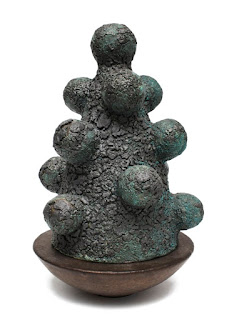A few years back I posted in this blog a St. Valentine's Day sermon possibility for those not using the lectionary. You can click 2010 in the Blog Archive, or you can find it linked here.
Monday, February 8, 2016
Thursday, February 4, 2016
Art As Public Collaboration
What is worship if not art? For me, worship is at its best when it is art. Worship and art involve beauty, mystery, inspiration, revelation, challenge, collaboration, creativity, meaning-making, and impassioned purpose.
These thoughts were stimulated by a presentation I heard yesterday from Amy Franceschini, an artist and designer of Future Farmers. I invite you to browse information about a course she is teaching at UW-Madison this semester to learn about her work, and then to visit FutureFarmers to see samples from the collaborative community projects this group creates.
Of particular interest to me is the Flatbread Society involving farmers, bakers, oven builders, artists, activists, soil scientists, and city officials, and the "Reverse Ark" project involving a collaboration with an environmental scientist, the Los Angeles Mayor's Office, the Department of Water, a priest, and a computer scientist.
The Flatbread Society Seed Journey is another project designed to transport ancient seeds found in Norway to Jordan, where they originated. The "seed mast" pictured above is filled with ancient grains grown by members of the Flatbread Society in Oslo, Norway.
These projects, and the others listed at their website, are examples of a rich and deep multi-disciplinary approach to the art of shared living in an interconnected world.
As I listened to Amy's lecture in the context of an Art Colloquium, I was challenged to connect what I was seeing and hearing to "art." Such is the FutureFarmers method: to broaden perspectives through participatory projects, playfully, so "participants gain insight into deeper fields of inquiry-not only to imagine, but to participate in and initiate change in the places we live."
What I draw from this is a reminder that in church settings, beautiful worship that connects to a church's central mission and purpose will involve engaging the skills and gifts of a variety of people in a participatory and collaborative process that welcomes innovation and creativity, while nurturing spaces that open one another to inspiration and revelation.
Tuesday, February 2, 2016
The Nevica Project
The UW Ceramics Program welcomed Jayson Lawfer as a lecturer at the Chazen Art Colloquium January 27. As a potter, Jayson has grown his own business showing, appraising, and selling ceramics, sculptures, and photography, as well as managing collections, through his Nevica Project.
His website ( http://www.thenevicaproject.com/) offers a look at beautiful objects produced by contemporary artists from all over the world, both for sale and for on-screen visual enjoyment. Of particular value is the Artists page on the site, with a list of those engaged in pottery, sculpture, photography, and prints, including a short biography and samples of their work.
Jayson used the word "passion" quite a bit in his talk, and it is clear to me that visiting his web page and the worlds he introduces is a way to invigorate one's own artistic imagination.
His website ( http://www.thenevicaproject.com/) offers a look at beautiful objects produced by contemporary artists from all over the world, both for sale and for on-screen visual enjoyment. Of particular value is the Artists page on the site, with a list of those engaged in pottery, sculpture, photography, and prints, including a short biography and samples of their work.
Jayson used the word "passion" quite a bit in his talk, and it is clear to me that visiting his web page and the worlds he introduces is a way to invigorate one's own artistic imagination.
 |
| Virginia Scotchie, Untitled 3, 2013 clay and glaze From home page The Nevica Project |
Monday, February 1, 2016
Dakota Mace Photography
Those of us who work with visual arts in teaching and worship need to continue to nourish our creativity by experiencing what others are doing. During this spring semester, I am attending a weekly Art Colloquium at the Chazen Museum of Art at the University of Wisconsin-Madison.

The first session featured a lecture by Dakota Mace, a UW grad student and photographer seeking to share and preserve aspects of her native New Mexico Navajo culture. With an eye towards Navajo arts like beading, weaving, and basketry, she also studies media stereotypes of native women, preserves images of mothers in a matrilineal society, and offers insight into the history of cultural appropriation.
A visit to her website ( http://dakotamace.com/) will offer a glimpse of complexly designed art forms that are sure to expand horizons and nurture visual imagination while offering an introduction to a rich and lively artistic heritage.

The first session featured a lecture by Dakota Mace, a UW grad student and photographer seeking to share and preserve aspects of her native New Mexico Navajo culture. With an eye towards Navajo arts like beading, weaving, and basketry, she also studies media stereotypes of native women, preserves images of mothers in a matrilineal society, and offers insight into the history of cultural appropriation.
A visit to her website ( http://dakotamace.com/) will offer a glimpse of complexly designed art forms that are sure to expand horizons and nurture visual imagination while offering an introduction to a rich and lively artistic heritage.
Subscribe to:
Posts (Atom)


